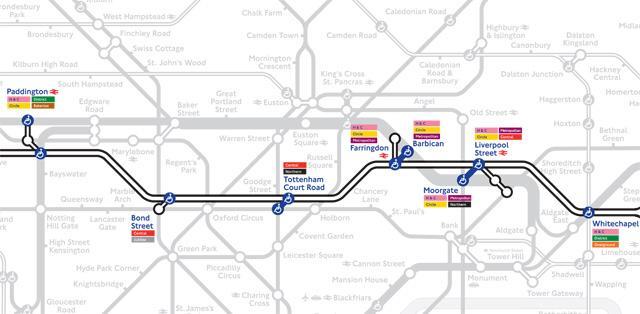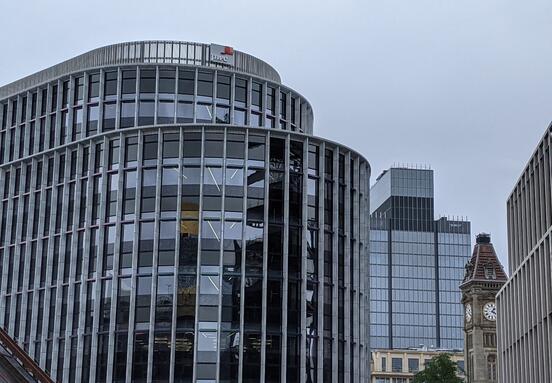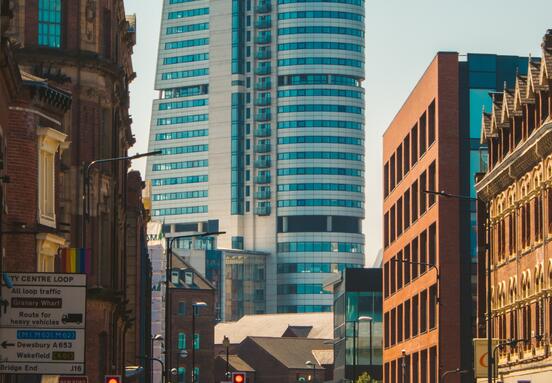The research shows that from 2008 to 2013, 41% of planning applications within a kilometre of a Crossrail station cited the new railway as a justification for the development proceeding, equating to around 53 million square feet of residential, commercial and retail space. Crossrail’s positive influence on development has increased over time, with 15% of planning applications citing it as a factor in 2009, increasing to 48% in the first six months of 2013.
Although the findings make clear that Crossrail is not the only factor influencing development, they do evidence the part Crossrail plays in unlocking regeneration in London and helping to alleviate constrained supplies of housing and offices in the capital.
The GVA research also identified that central London and the East End are seeing the most planning applications within a kilometre of Crossrail stations, with Tottenham Court Road, Farringdon, Liverpool Street, Canary Wharf, Custom House and Stratford each having over 5 million square feet in the development pipeline respectively. Outer areas such as Woolwich, Southall, Ilford, Slough and Maidenhead are also seeing significant regeneration brought forward by Crossrail.
Chris Hall, Senior Director at GVA said: “Our research again highlights the vital role Crossrail plays in unlocking London’s growth, the range and scale of development aligning itself to the line is considerable. The influence Crossrail has had extends beyond its transport role, raising the quality of the place through direct development and investment in the public realm and connecting new parts of London together. This is driving the growth and diversification of established areas, delivering a broader mix of activity and providing the impetus to deliver London’s major regeneration opportunities. What is clear from our findings is that confidence is growing with time and that, while progress to date is strong, there are still significant opportunities that can be realised.”
Mayor of London, Boris Johnson said: “The private sector has contributed financially to Crossrail and so it is only right that developers are now reaping the rewards that such major investment in transport can bring. From east to west, Crossrail offers us clear proof that investing in our transport infrastructure pays dividends on many other fronts. The creation of new homes, retail and office space is of paramount importance in galvanising and safeguarding London’s economy and Crossrail is helping to do just that.”
Ian Lindsay, Crossrail Land and Property Director said: “London is in need of new housing and top quality commercial office space. Crossrail is helping to deliver new property to the capital by giving developers and investors confidence to press forward with projects in close proximity to stations.
“Businesses and residents around Crossrail stations will benefit from a 10% uplift in London’s transport capacity, faster travel times, better connections and much enhanced public areas in and around the stations.”
Mike Brown MVO, Managing Director London Underground and London Rail said: “We know that improvements to transport infrastructure have a positive impact in unlocking growth and regeneration so it is not surprising that GVA’s research shows this is also happening along the Crossrail route. Crossrail will make it easier for people travelling across London, cutting journey times and supporting more jobs, homes and economic growth to support London’s growing population.”
In its own right, Crossrail is developing three million square feet (gross) of commercial, residential and retail space above 12 key construction sites. It already has joint ventures in place for six of these sites and will seek joint venture partners for the others in the coming months.
Previous research published by GVA at the end of 2012 found that Crossrail could help create £5.5 billion in added value to residential and commercial real estate along its route between 2012 and 2021. It will support the delivery of over 57,000 new homes and 3.25 million square metres of commercial space.
When Crossrail opens in 2018, up to 24 trains per hour will operate during peak between Paddington and Whitechapel. It will serve 38 stations, connecting Maidenhead and Heathrow in the west with Shenfield and Abbey Wood in the east via central London.
Source: property-magazine
Publisher: property-magazine







